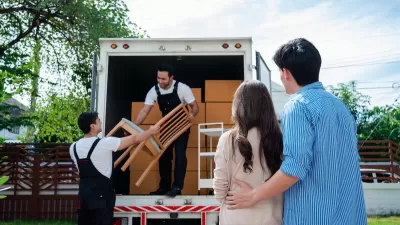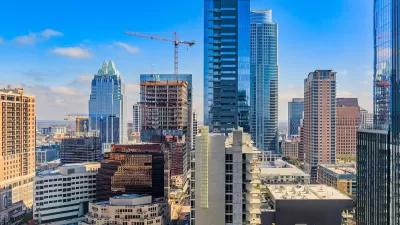A state bill that would allow multifamily buildings to only include one staircase could help boost the housing supply and encourage more spacious and well-designed apartments.

The Los Angeles Times Editorial Board is getting behind the movement for single-staircase reform, which proponents argue would create the opportunity for more housing.
The editorial highlights Assembly Bill 835, which “would direct the State Fire Marshal to propose standards to allow multifamily buildings with one stairway while still protecting residents, which could make it easier to build small-to-medium sized complexes on small lots.”
Single-staircase buildings were outlawed in many U.S. cities and states in the early 20th century as part of an effort to improve fire safety in multifamily buildings. “In recent years, however, indoor sprinklers and fire-safe construction have become common in new buildings, and architects and housing advocates argue that the two-stairway requirement should be reconsidered.”
The two-staircase requirement has eliminated building designs common in other countries that provide more variety and opportunities for community, while data suggests that there is no difference in fire safety given other modern fire standards.
The editorial board acknowledges that allowing single-stair buildings wouldn’t solve the housing crisis, but it could join other policy solutions such as ADUs in alleviating the shortage and creating more interesting and comfortable buildings. “The change would give architects more flexibility in designing larger units for families, with shared courtyards, more light and ventilation.”
FULL STORY: Editorial: How changing the rules on stairways could help California build more homes

Manufactured Crisis: Losing the Nation’s Largest Source of Unsubsidized Affordable Housing
Manufactured housing communities have long been an affordable housing option for millions of people living in the U.S., but that affordability is disappearing rapidly. How did we get here?

Americans May Be Stuck — But Why?
Americans are moving a lot less than they once did, and that is a problem. While Yoni Applebaum, in his highly-publicized article Stuck, gets the reasons badly wrong, it's still important to ask: why are we moving so much less than before?

Using Old Oil and Gas Wells for Green Energy Storage
Penn State researchers have found that repurposing abandoned oil and gas wells for geothermal-assisted compressed-air energy storage can boost efficiency, reduce environmental risks, and support clean energy and job transitions.

Updating LA’s Tree Rules Could Bring More Shade to Underserved Neighborhoods
A new USC study finds that relaxing Los Angeles’ outdated tree planting guidelines could significantly expand urban tree canopy and reduce shade disparities in lower-income neighborhoods, though infrastructure investments are also needed.

California's Canal Solar Projects Aim to Conserve Resources and Expand Clean Energy
California’s Project Nexus has begun generating electricity from solar panels installed over irrigation canals, with researchers and state agencies exploring statewide expansion to conserve water and boost clean energy production.

HHS Staff Cuts Gut Energy Assistance Program
The full staff of a federal program that distributes heating and cooling assistance for low-income families was laid off, jeopardizing the program’s operations.
Urban Design for Planners 1: Software Tools
This six-course series explores essential urban design concepts using open source software and equips planners with the tools they need to participate fully in the urban design process.
Planning for Universal Design
Learn the tools for implementing Universal Design in planning regulations.
Heyer Gruel & Associates PA
City of Moreno Valley
Institute for Housing and Urban Development Studies (IHS)
City of Grandview
Harvard GSD Executive Education
Salt Lake City
NYU Wagner Graduate School of Public Service
City of Cambridge, Maryland





























